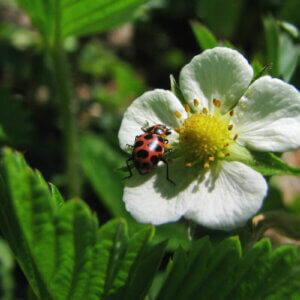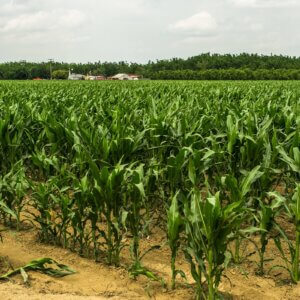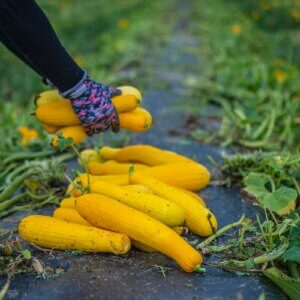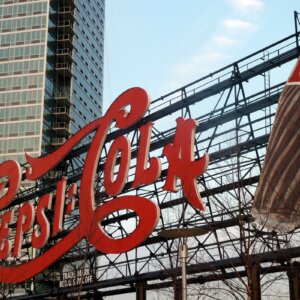Fire has always been a part of our environment just like water, earth, and air. Believe it or not, fire is one of the most essential natural agents of change because it plays a vital role in maintaining certain ecosystems. Native Americans have understood this and used fire to maintain prairies, keep the ecosystem healthy, and run game animals. Careful and mindful indigenous fire practices are methods still used today.

By safely reducing the amount of brush and trees, controlled burns or prescribed fires can help reduce the catastrophic damage caused by rampant wildfires. The practice also encourages new growth of native vegetation, and maintains the numerous plant and animal species whose habitats depend on periodic fire. A controlled burn is one of the most effective tools or techniques we have for preventing the spread of wildfires and their intensity.
However, a prescribed fire or controlled burn is still fire. Careful and mindful planning is necessary to execute a safe, controlled burn. Fire can spread out of control in a matter of seconds, which can lead to injury, death, and destruction.
Do not try to conduct controlled burns based solely on the information you find in articles online. This article is sharing information on how they can be beneficial and sometimes necessary, not training you to do them yourself. Contact a professional service, or a local Department of Natural Resources or university extension department, if you need a burn completed on your property.
Pros and Cons of Controlled Burns
Again, controlled burns have many long-term benefits. When a fire is conducted properly and safely, there is much good that can come of it. In the wrong hands or even in the right hands, accidents happen, and it doesn’t take long for a small fire to become a massive wildfire that ravages the area.
Pros of Controlled Burns
Lowering the Risk of Dangerous Wildfires
Controlled burns can help clear out densely grown vegetation on the forest floors. Over time, the ground will become thick with dead leaf litter, dried twigs, shrubs, and small trees. The overabundance of these natural materials will serve as fuel to fires.
While it might sound contradictory, one of the easiest ways to get rid of excess fire fuel is to start small-scale fires and allow the flames to safely burn. When this is done under safe conditions (not too windy or dry), it has the potential to reduce the risk of more dangerous fires flaring up without warning.
Increase Water Availability
Burning away plants that require a high demand for water in the soil can potentially increase the water availability for the animals in the area. For instance, the pond and stream on our property remain more fluid when we clear away the excess plant life that consumes the water. Leaf litter and old plant debris also absorb some of the water that could be flowing into the reservoirs.
Increase Plant Diversity and Control Invasive Species
Burning away thick, overgrown, and dense vegetation allows room for other plant species to grow and thrive. Invasive species and thorns tend to take over the land quickly and with a vengeance. When a species invades an ecosystem, there is more competition for the precious nutrients in the soil and water resources among plant life. Eliminating the pesky invasive species before it’s too late will allow native plants the opportunity to reestablish themselves.
Improve Wildlife Habitats
Clearing away the dead material, and providing more ground space for new plants to grow that will serve as food and potential cover for different animals, is important. In addition, controlled burns clear away vegetation that’s gotten out of hand, becoming too tall or thick for animals to maneuver through or eat. Any new vegetation that grows will be much more accessible and edible for herbivores.
Cons of Controlled Burns

Risk to People, Animals, and Property
Any fire, whether it’s a controlled burn or not, poses a risk to all things surrounding it. Even when the entire procedure goes according to plan, fire is a wild, unpredictable element we must respect. It is powerful and can consume life. Small fires can become raging wildfires that destroy homes, displace animals and humans from their natural habitats, and kill everything they touch.
Reduce Air Quality
Regardless of whether a fire is under the control of trained professionals, experts, and officials, it reduces the air quality (temporarily). Smoke, ash, and the particulate matter that fire produces can make breathing difficult for animals and people in the area. It can reduce visibility, which can lead to accidents and other issues.
Reducing Water Quality
Fire can greatly reduce the quality of surrounding water sources. The soil surrounding the water can be disrupted, causing sediment, debris, and contaminants to access nearby streams. In turn, the water can become dangerous to drink. The larger the fire and the closer it is to water sources, the greater the potential risk becomes.
Things to Do Before Burning
If you are considering a small-scale controlled burn on your homestead or farm, there are responsibilities you must make sure are handled. We know controlled burns can improve the soil for gardens and have other benefits, but if things go wrong, lives are in danger. Safety first!
Always Check the Weather
Avoid burning when the humidity is below 35%, when the growing vegetation is very dry, and if the wind is blowing more than 5 miles per hour.
Always Report a Controlled Burn
Before any controlled burn ever begins, it is crucial to report the burn to the Forestry Division Dispatch Center or your local fire department. This way, if anything goes wrong, they have a heads up, and if it isn’t a good time, they will give you a warning to avoid burning.

Consider Your Neighbors and Give Them a Heads Up
Where there is fire, there is smoke so avoid burning on windy days. Even on days when there is barely a breeze, be sure the wind isn’t blowing in your neighbor’s direction. Making them aware that you’re burning will give them a heads-up in case something goes wrong. It also helps keep too many people from burning at once, which eliminates the threat of large fires getting out of control in one area.
Protective Safety Gear
Always have protective safety gear nearby when burning, especially fire extinguishers and access to a lot of water. The less potential and opportunity for damage and injury, the better.
Step 1: Plan
When conducting a controlled burn, you will need to create a burn plan. This is an outline of the area you will be burning, what the goal is that you hope to accomplish by conducting a controlled burn, how you’re going to do it, and how you will evaluate the end results. Speaking to a local forester will help you create an overall plan. Some states have templates you can use.
It is helpful to include the cost of the burn, potential costs of damage (liability) should things go wrong, the time of year, who will be on the burn team, and your safety plan.
Step 2: The Burn Site
Before you get started, know your property lines and boundaries. It is imperative that you know the locations of major features including buildings, gates, fences, power lines and poles, all water sources, trails, and roads.
Walk the property and make note of anything that could accelerate or slow the path of the fire: valleys, slopes, and open land. Identify all areas containing a lot of debris (fuel), including matted dry grass or dead trees. Be aware of areas you do not want to burn.
It is essential to be mindful and note any smoke-sensitive properties nearby with homes, animal farms, airports, and roads.
Step 3: What Season Will You Burn?
Now, you must decide when you will burn. The season is vital. You will want low wind with moderate humidity and temperatures between 40 and 60 degrees Fahrenheit. However, the temperature will depend on the location and your objective for the burn.
Many experts recommend conducting controlled burns during the end of winter and early spring before everything gets green. During this time of year, fire will consume the dead plants before the desirable vegetation has grown. The nutrient-rich soil will feed the land and woods for the remainder of the spring and summer. Late spring and summer burning work well too, but they are more challenging to control.
Burning during the fall may or may not be effective, but this depends on the availability of fallen leaves and other natural fuels. Speak to a local forester to help you decide what time of year is best for your area to meet your goals.
Step 4: Firebreaks
Your property may already have some firebreaks. These can be in the form of ponds, plowed fields, roads, and anything else that will stop a fire in its path. However, you may need to create more. This can be done by plowing, mowing, bulldozing, disking, or wetting a wide area around the burn area (this must be done the day of the burn directly before starting the fire).

If you’re only going to burn a small area, dig down to mineral soil in a complete circle around the burn site to ensure the flames don’t spread outside of the intended burn space. Honestly, this is a vital step that should be taken whether the burn is for a small or large space. It will help prevent the fire from spreading beyond the desired site.
Before you ever touch the flame to the ground, have your safety gear together. A sprayer capable of 125 pounds-per-square-inch pressure, and an output of at least 6 gallons of water per minute is ideal. Lower-pressure cattle or field crop sprayers with handgun nozzles work well if the area you’re burning is small with safe boundaries.
Have a first aid kit at the ready and the emergency service number on speed dial. Burning large areas means you need a crew to watch all sides of the fire. Six eyes are better than two.
While controlled burns are beneficial, they can be incredibly dangerous and deadly. I have been a part of controlled burn crews, and when a fire gets out of hand, things can go from bad to worse in the blink of an eye. Never hesitate to call the authorities; even if it’s a false alarm. It is better to be safe than sorry.
Always play it safe, and as usual, happy homesteading!










































Leave a Reply